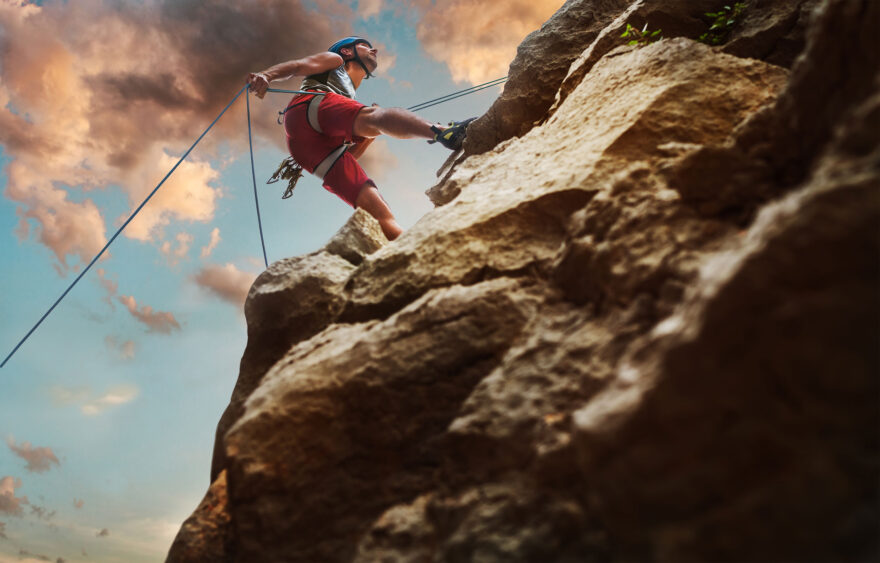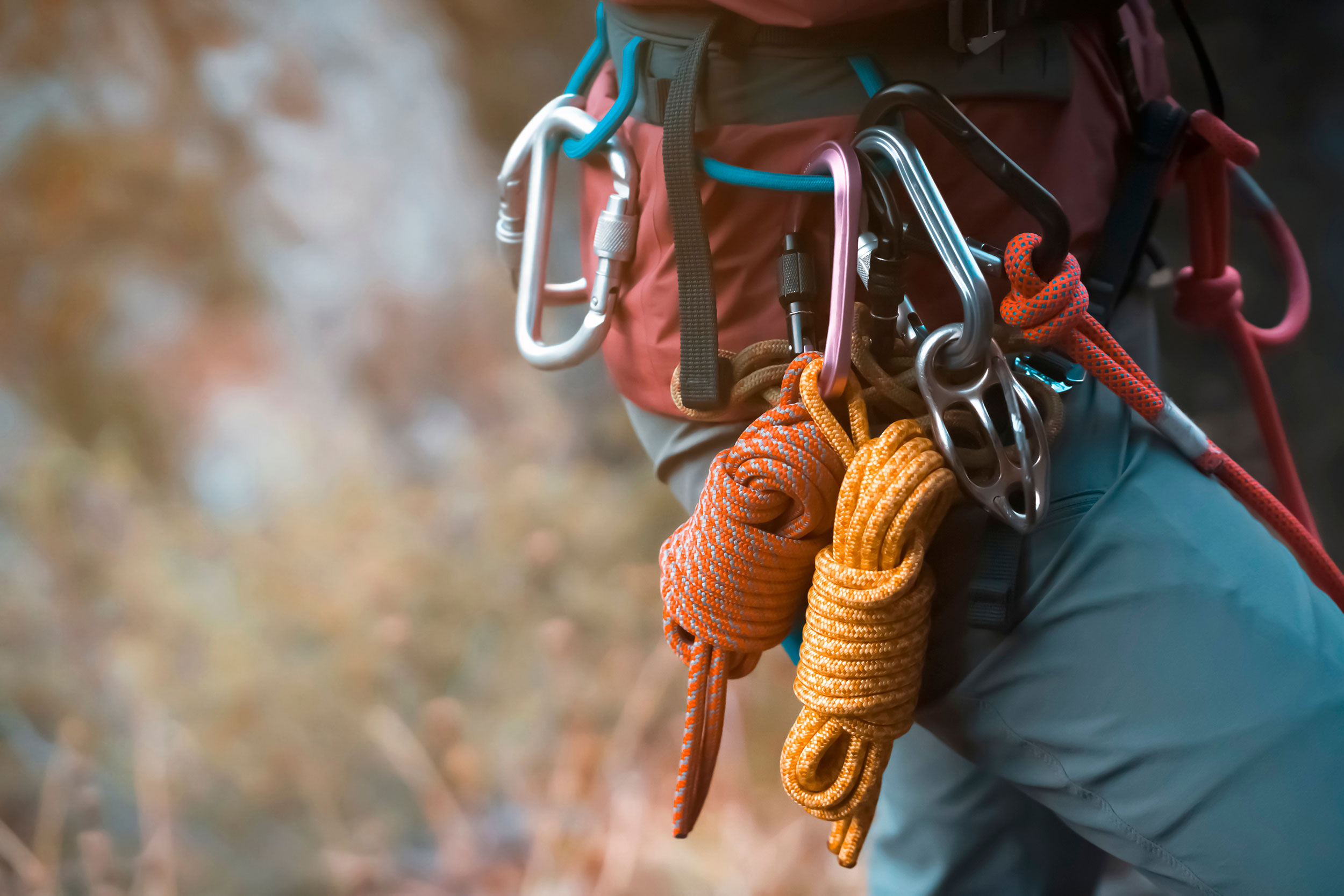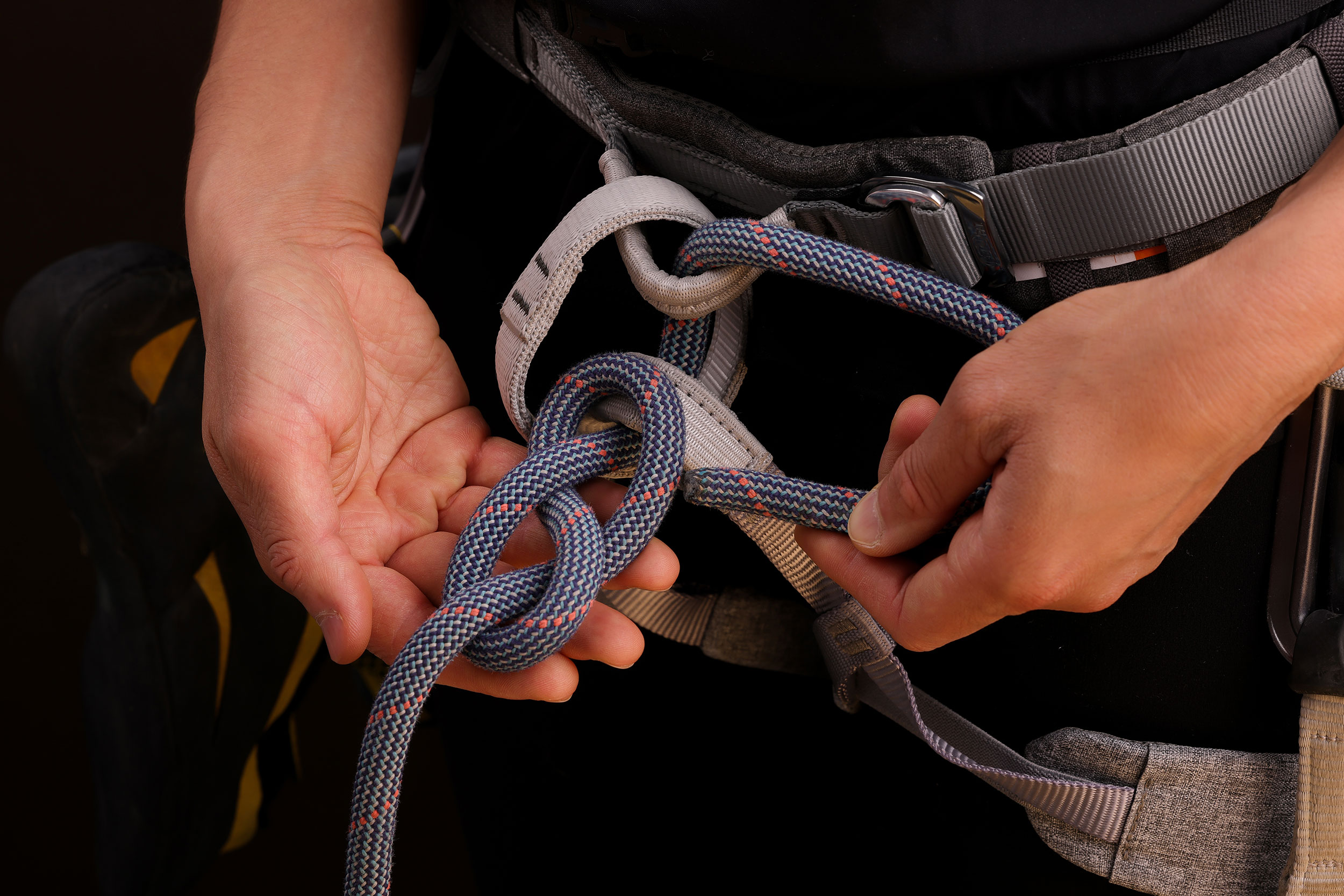
Image by Soloviova Liudmyla, Shutterstock
Rock climbing is an exhilarating sport that pushes adventurers to their physical and mental limits, offering breathtaking views and a profound sense of accomplishment. However, the inherent risks of the sport mean that every climber should be equipped with more than just strength and technique. Wall rescue skills are an essential part of a climber’s repertoire, providing the knowledge and capability to handle emergencies like falls, injuries, or rockfall.
Understanding these techniques not only increases a climber’s safety but also enhances their confidence. In this article, we’ll explore critical wall rescue techniques for single pitch climbing and why these skills are a non-negotiable aspect of rock climbing preparedness.

Image by africa_pink, Shutterstock
Learn the Basics
All rescue systems are going to be based on the foundation of a basic set of knots and hitches. Before you can even begin to learn how to rescue a partner, you need to learn these rope skills. This is by no means an exhaustive list, but it will definitely get you started. Click on the name of each knot for a tutorial on how to tie them.
ActionHub spoke to Patrick, an American Mountain Guide Association Single Pitch Instructor, about the importance of this foundation.
“You want to be able to self reliant when outdoor climbing. If you aren’t, Plan A is assuming someone else knows how at the crag,” he said. “[Self-reliance is important] especially if you are not at popular crag and aren’t around lot of people”

Image by Outim, Shutterstock
Knots
Figure 8 on a Bight — similar to your tie-in knot but for use mid-rope.
Double Fisherman’s Knot — joins two ropes or two ends of a rope or cord together.
Bowline Knot — makes a loop at the end of the rope
Overhand Knot — typically used as a stopper knot
Hitches & Friction Knots
Prusik Knot — used for ascending or rappelling
Girth Hitch — attaches a sling or webbing to objects
Munter Hitch — used to belay without a belay device
Clove Hitch — attaches the middle of a rope to an anchor
Going Hands — Free While Belaying
The cardinal rule in belaying is never take your hand off the break rope. When outdoor climbing, there are situations when you may need both hands. In a single-pitch climbing scenario, this would likely only happen if the belayer has a tangled rope at the bottom of the route and needs both hands to undo the mess.
Ideally, this would be prevented by flaking the rope nicely before the climber goes up, but accidents happen and climbers need to be prepared. Patrick said, “It is nice to be able to go hands free for any unforeseen event.” This can be accomplished with the Mule Overhand Knot. Check out this article for more info.
Belay Takeover
Patrick described to ActionHub situations in which a belay takeover may be needed.
“Sometimes nature calls and sometimes the belayer needs a break,” he said. “The belayer could feel overheated or need food and need to pass the belay off to someone else.”
Check out the beginning of this video and practice with a certified guide before using this technique.
Rescue skills should be practiced multiple times near the ground before ever being put to use in a rescue situation. As with all climbing skills, an online article such as this one does not replace in-person practice with a certified guide.
As you venture into the vertical wilderness, being equipped with rope rescue knowledge ensures you are not just an adventurer, but a responsible guardian of your own and your partners’ safety.
Happy climbing and always do your safety checks!
Lauren Loria-Corbat is a writer and photographer who skis, rock climbs, hikes and backpacks. She loves introducing people to outdoor sports through journalism as well as hands-on teaching as a ski and climbing instructor.
 Your Privacy Choices
Your Privacy Choices
 The
The